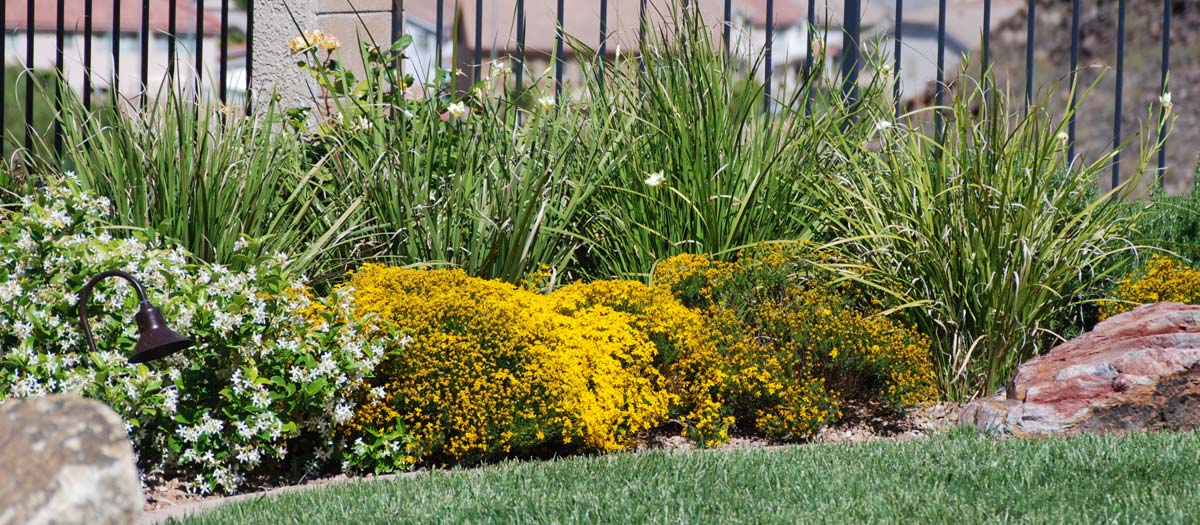Whether you are creating a new landscape or maintaining an existing one, keeping your yard healthy in our desert climate can be a challenge. Follow these tips to ensure your landscape thrives.
Installing plants, trees and mulch
The first step to ensuring your landscape will thrive is making smart choices when choosing plants, trees and mulch.
Once you've made your water-efficient selections, you'll want to use your landscape plan to identify where your plants will be located. Mark the locations with temporary paint or marker flags, and take a good look at the visual once you're finished to ensure you've placed plants and trees where they will have plenty of room to grow.
Plants flourish in loose, nutrient-rich soil–and because the soil in Southern Nevada is neither of these things, you will need to do some preparation. For soil tips and other installation help, consider consulting a Water Smart Landscaper.
Installing drip irrigation
Drip irrigation systems are ideal for desert plants because they apply water slowly and deeply to a plant's root zone, which allows dry desert soil time to absorb water that would otherwise evaporate or run off.
Drip Installation TipsInstalling plants
Desert plants can be added to your landscape at any time of year, but fall is the best time to ensure plant health. Planting involves more than digging a hole and dropping a plant in the ground. Haven't found the perfect plants for your landscape yet?
Staking trees
The trunk of a healthy, well-developed tree should be strong enough to hold itself upright, but trees in open areas may need staking, especially if the area is particularly windy. For trees to survive in Southern Nevada, you'll also want to select the best types for our climate.
Applying mulch
Use a layer of one to three inches of mulch, depending on your preferences. Don't allow mulch to make direct contact with the plants, forming a ring about two to three inches around plants instead.
🚫🌿 Five landscaping mistakes you must avoid in the Vegas desert! 🌵🏡
Navigating the unique challenges of the Las Vegas desert climate is key to a thriving yard. While overwatering is a common woe, it's not the only one!
Watch this video to unveil the five biggest mistakes to steer clear of when landscaping in our sunny valley.
Money DOES grow on trees!🌳
As part of the Water Smart Landscapes rebate, our Tree Enhancement Program pays new participants a bonus of $100 for every new tree installed (up to 100 percent canopy coverage).
Tree care during landscape conversions
Existing, mature trees are a valuable and attractive part of any landscape. Unfortunately, a tree's root system can be disturbed during a landscape conversion or other construction project. Follow our tips to ensure trees are protected.
